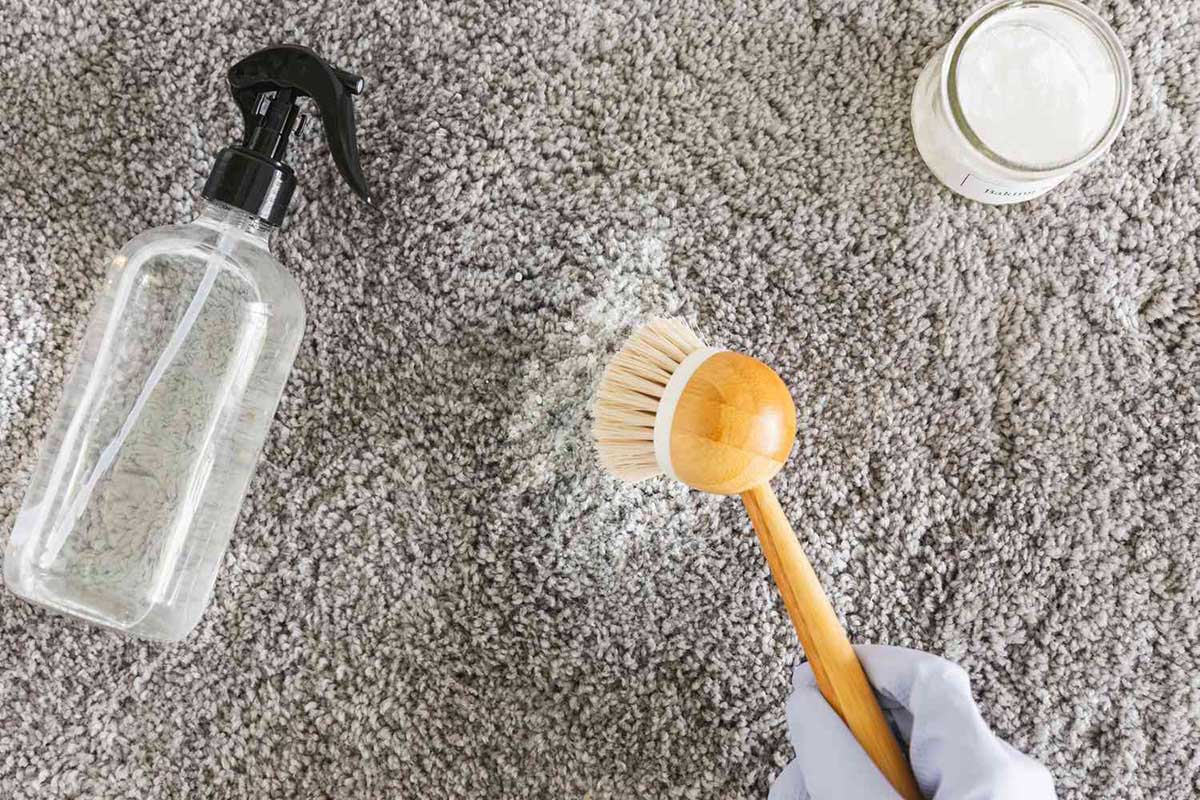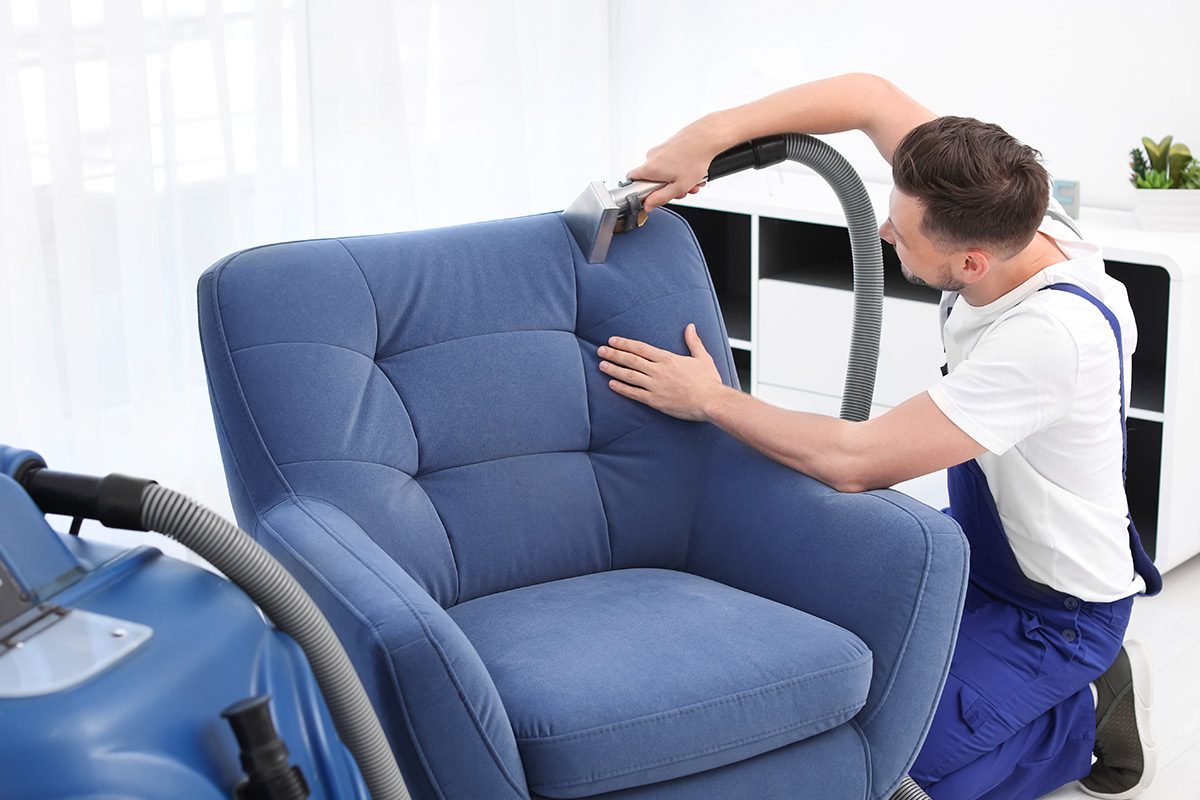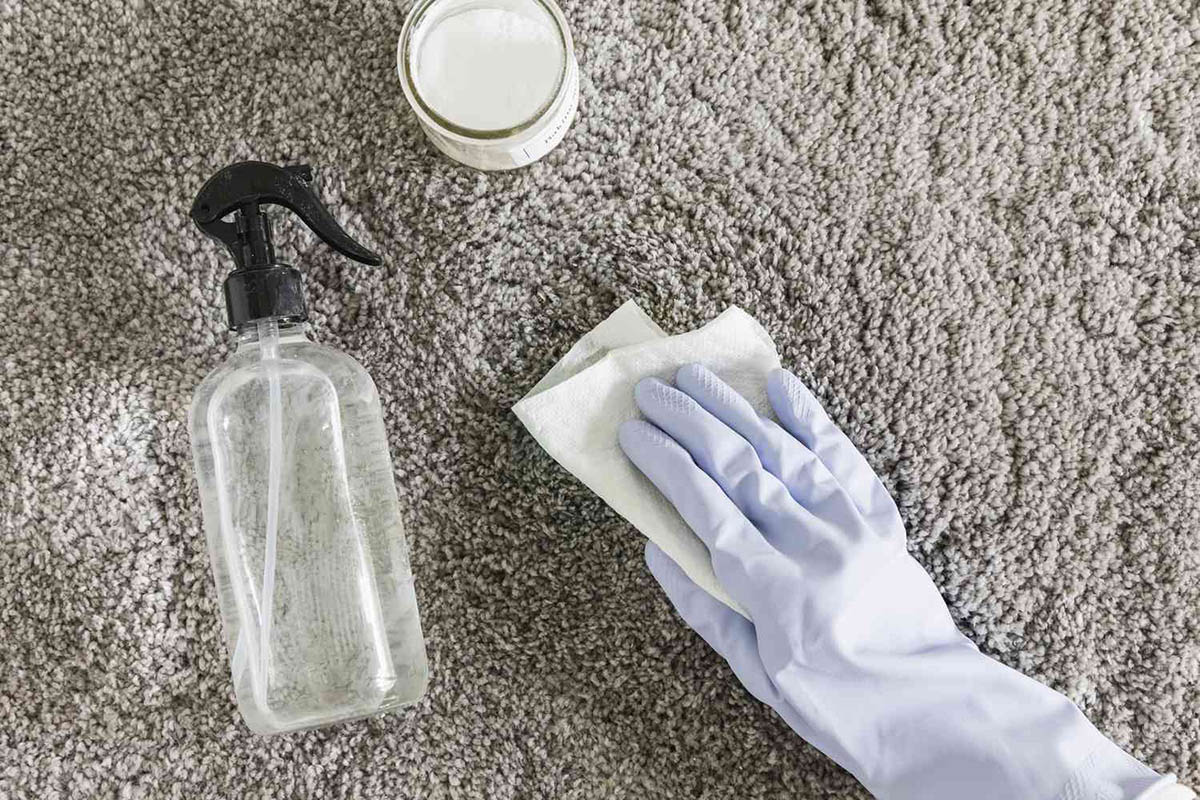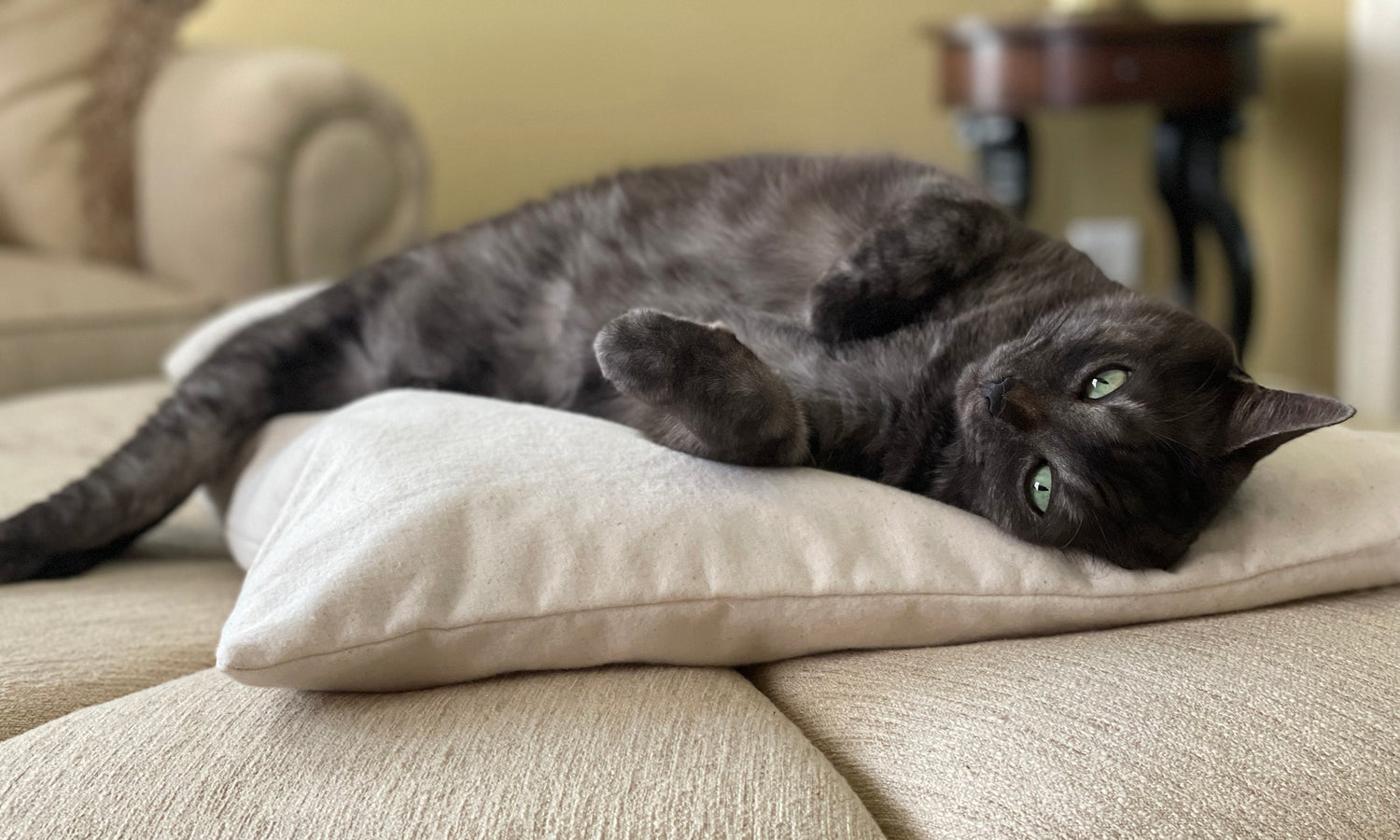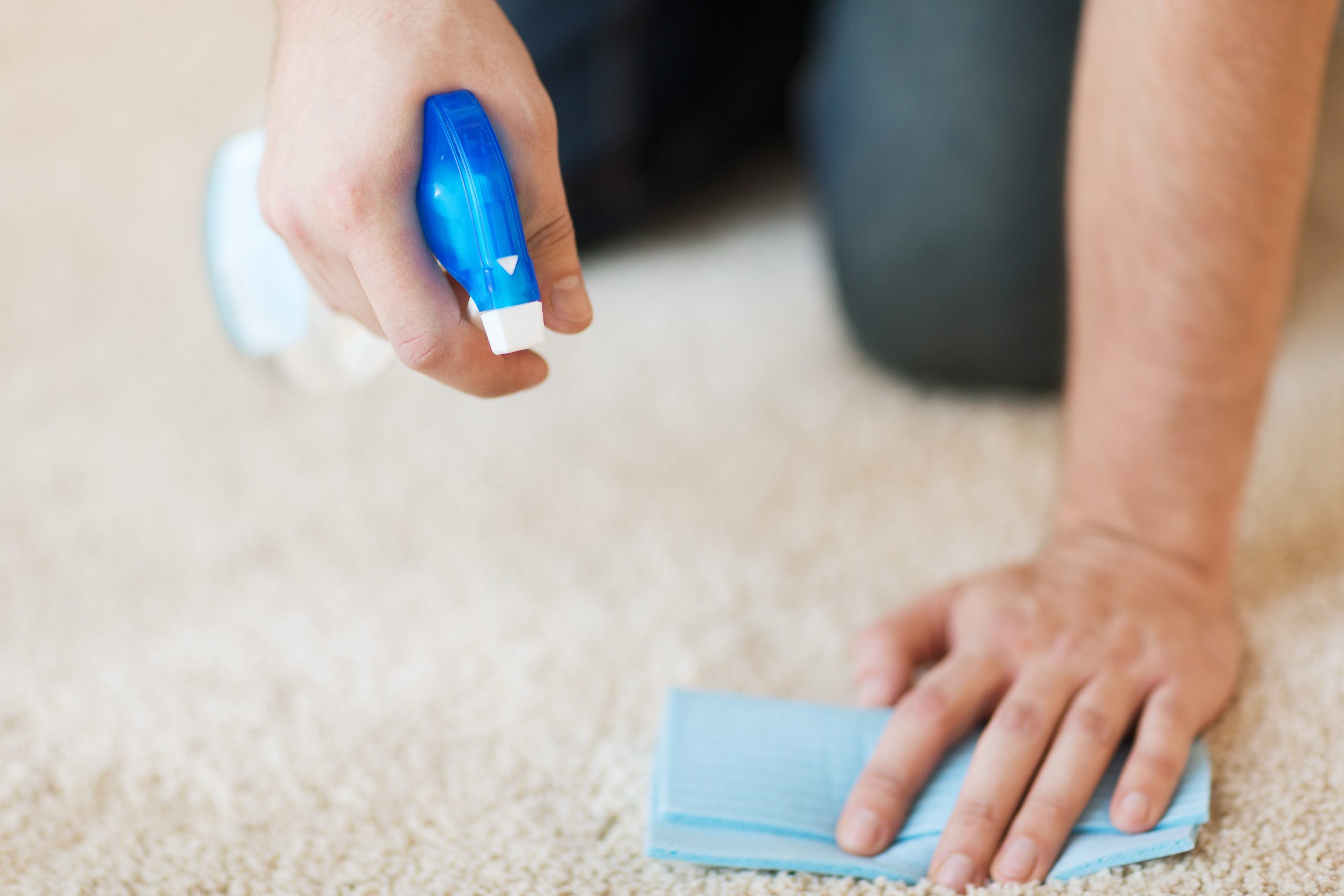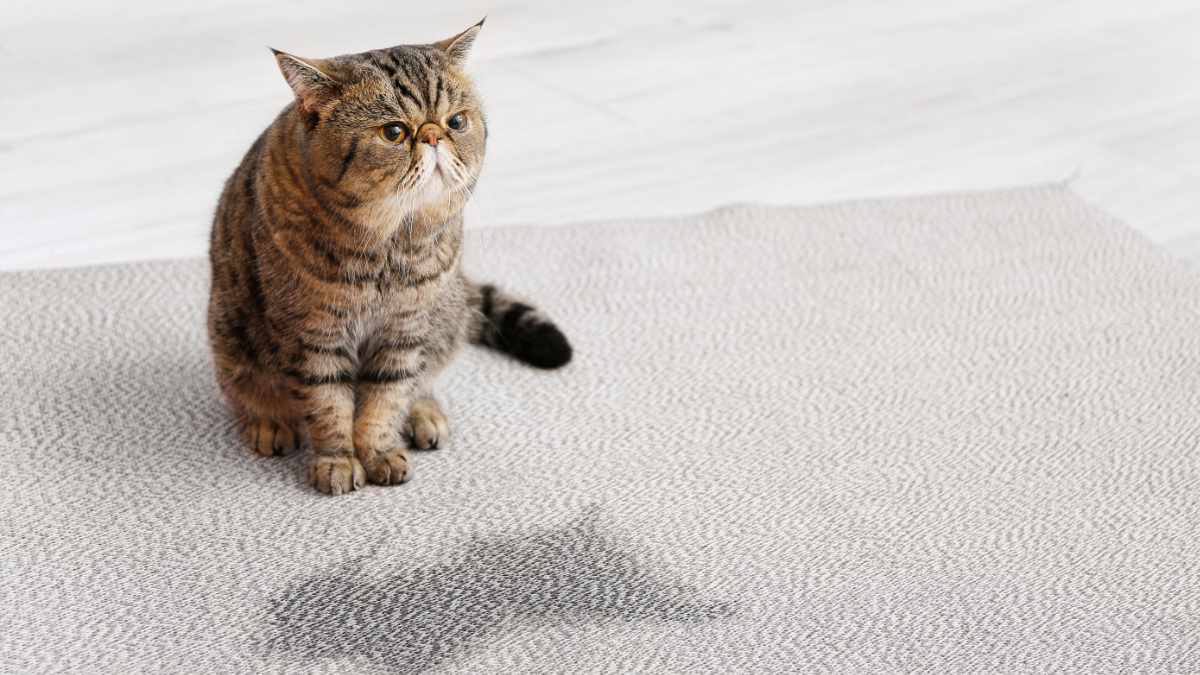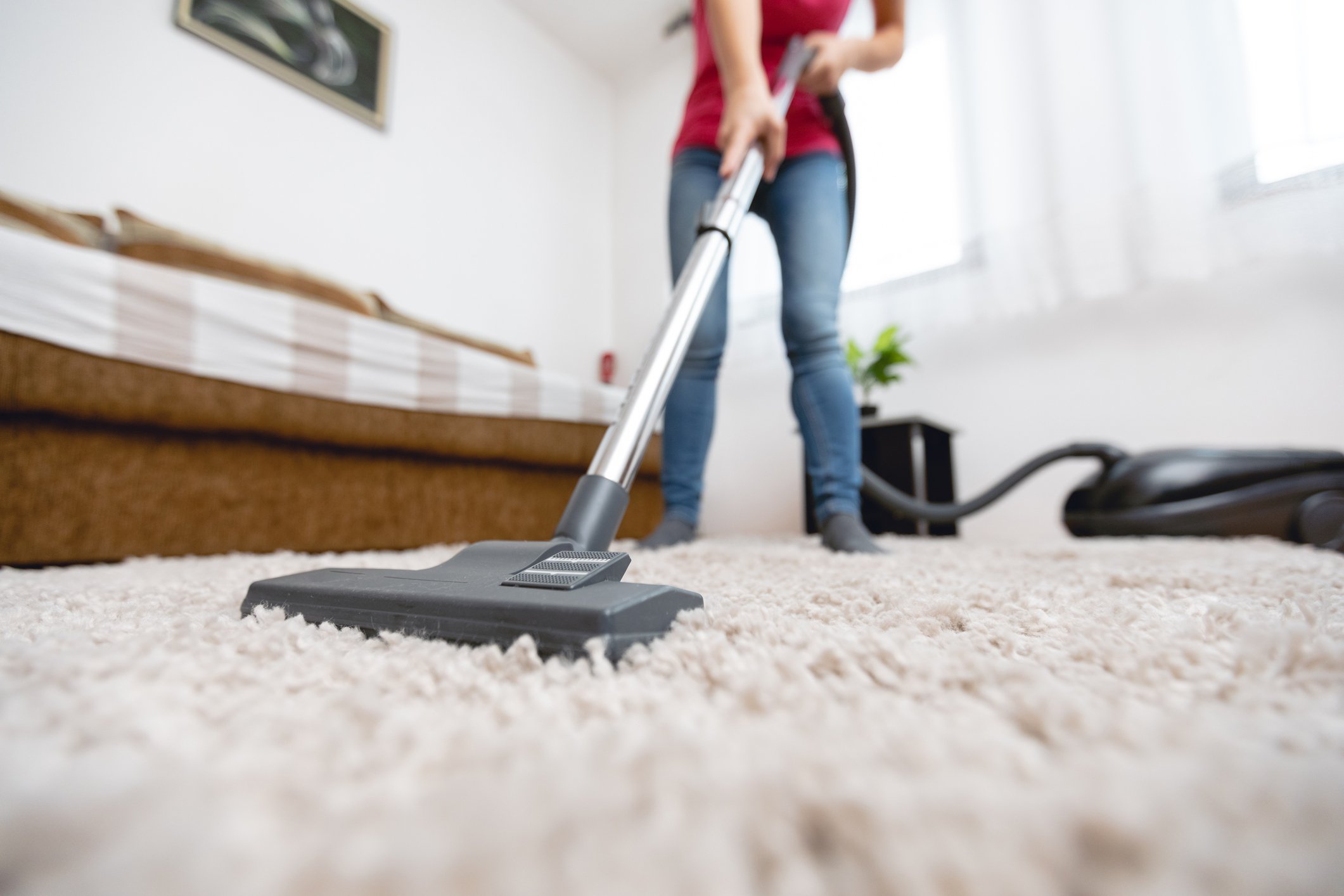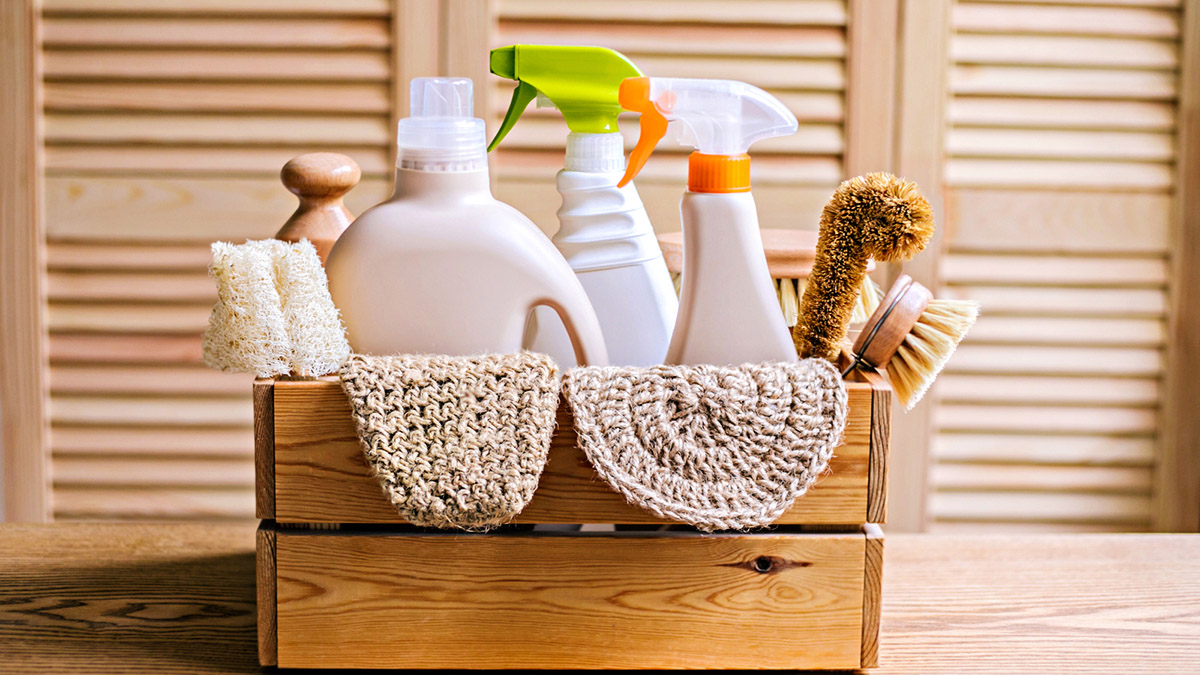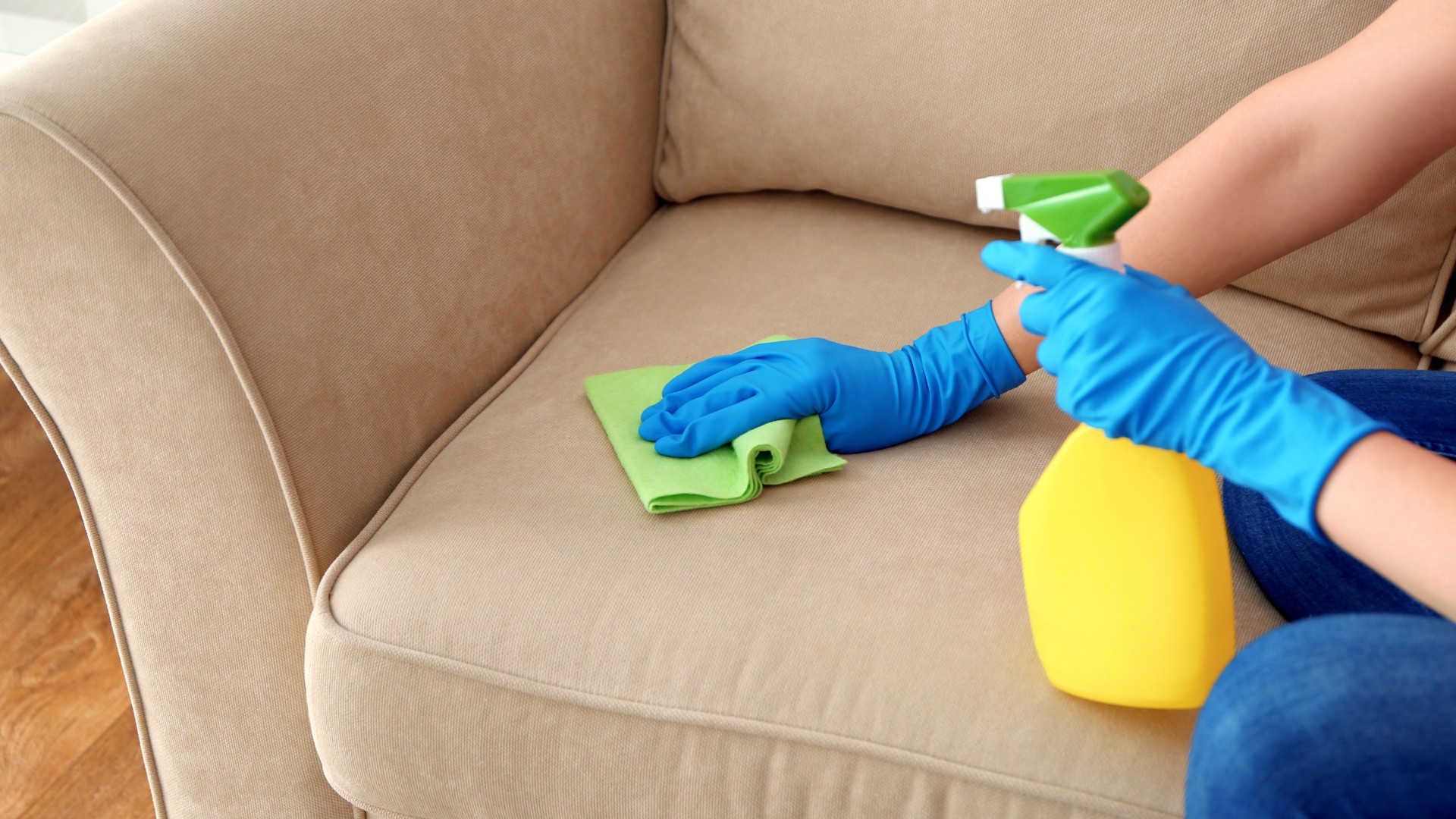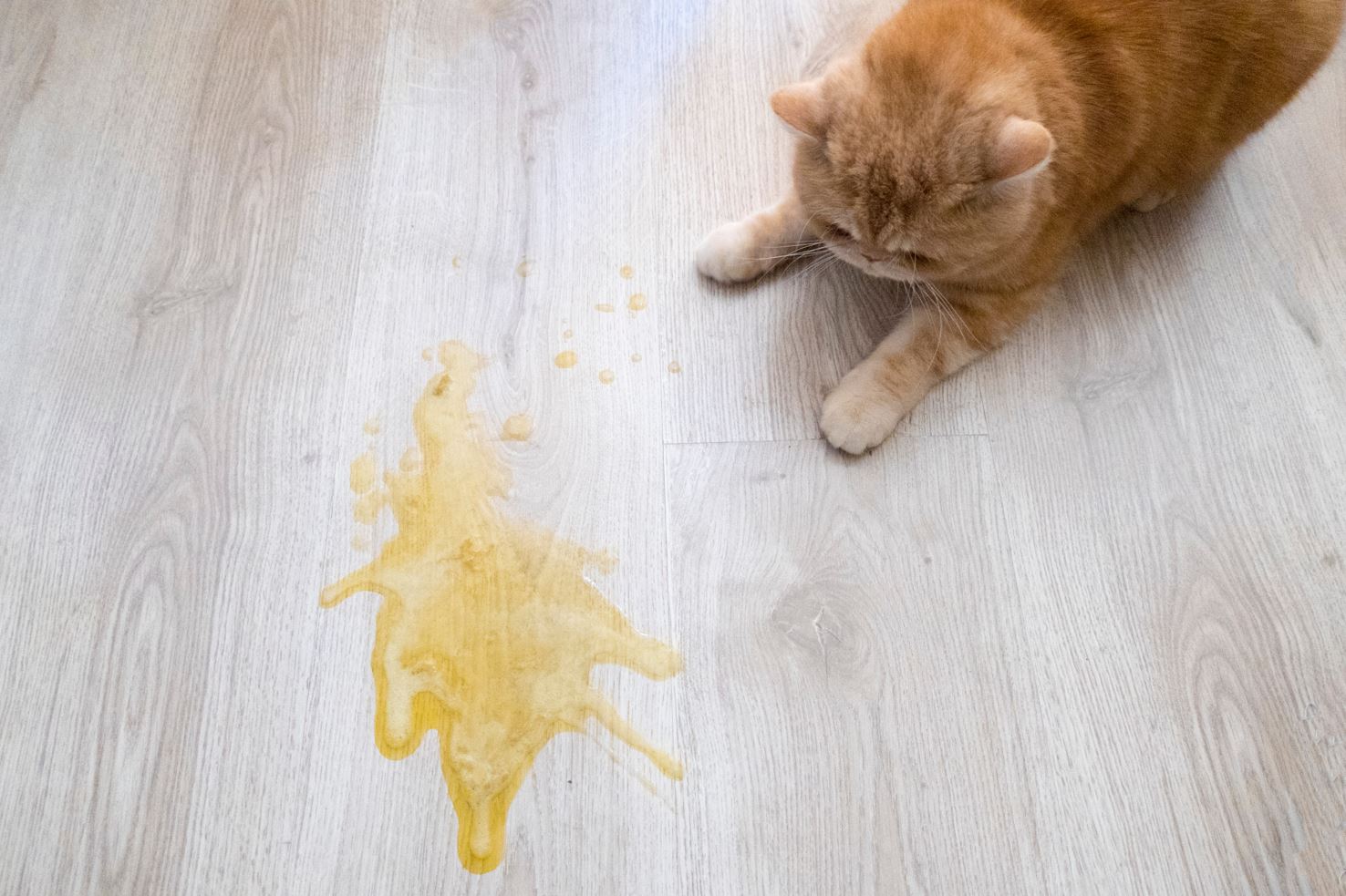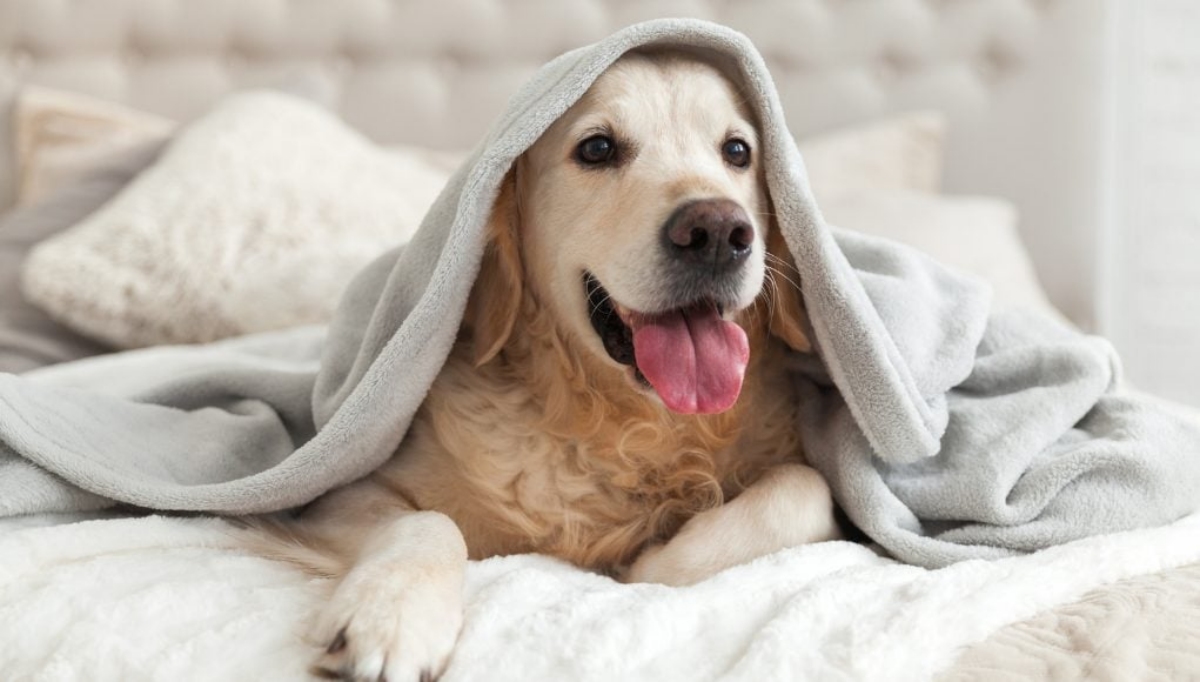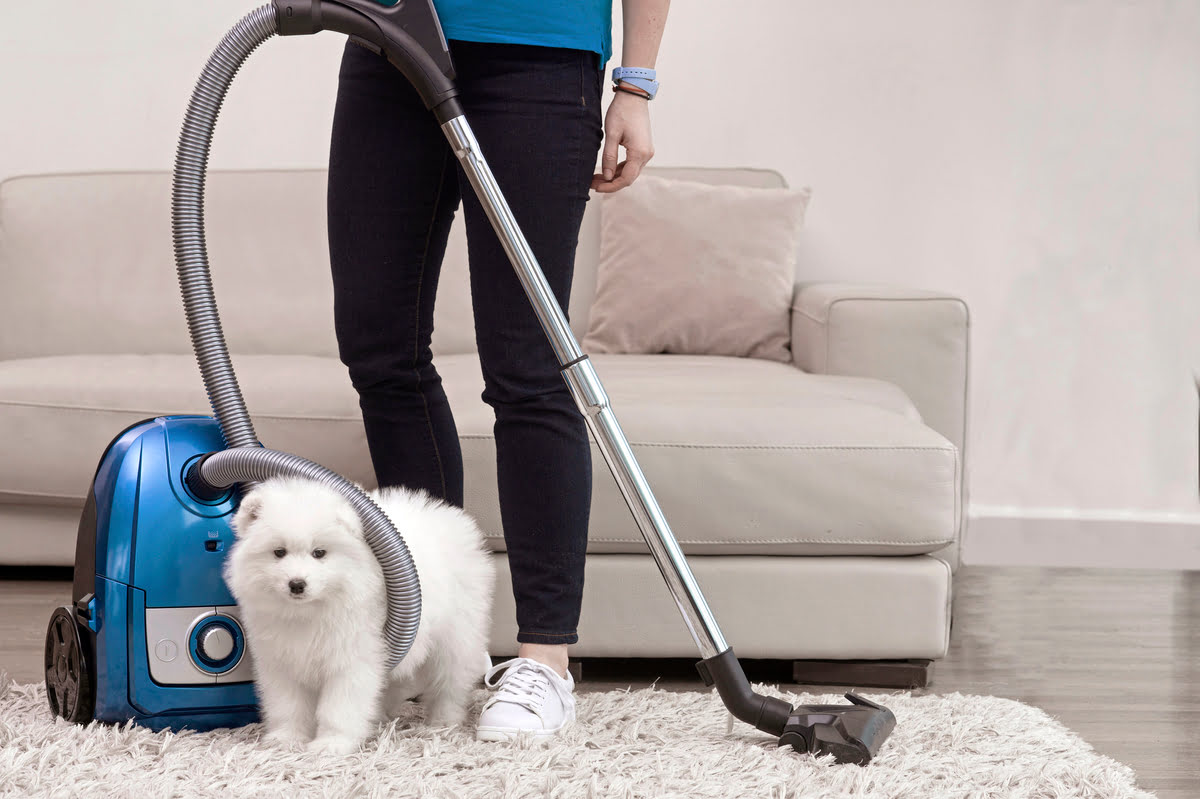

Articles
How To Take Dog Pee Smell Out Of A Carpet
Modified: September 1, 2024
Learn effective techniques and solutions to remove dog pee smell from your carpet with these informative articles. Get rid of the odor and restore freshness to your home.
(Many of the links in this article redirect to a specific reviewed product. Your purchase of these products through affiliate links helps to generate commission for Storables.com, at no extra cost. Learn more)
Introduction
Having a furry friend at home is a joy-filled experience. They provide companionship, love, and endless entertainment. But let’s face it; accidents happen, especially when it comes to potty training. Dealing with dog pee smell can be a frustrating and unpleasant task, but don’t fret! In this article, we will guide you through the steps to take dog pee smell out of a carpet effectively.
Understanding the causes of dog pee smell is essential to tackle the issue at its root. When dogs urinate on carpets, the odor can quickly permeate the fibers and linger even after apparent clean-up. This happens because urine contains ammonia and uric acid, which can create a persistent and offensive scent.
Now, let’s get down to business and discuss the steps you can take to eliminate dog pee smell from your carpet. Keep in mind that acting promptly is crucial to prevent the stain and odor from setting into the carpet fibers.
Key Takeaways:
- Act promptly to clean up dog pee on carpets to prevent lingering odors and stains. Use homemade solutions, blotting, and neutralizing methods for effective odor removal.
- Establish a consistent potty routine for your dog, use deterrents, and consider professional help to prevent future accidents and maintain a fresh-smelling, clean carpet.
Read more: How To Take Smell Out Of A Carpet
Understanding the causes of dog pee smell
Before we delve into the solutions, it’s important to understand what causes that distinctive dog pee smell to linger in your carpet. When a dog urinates on a carpet, there are two main components that contribute to the odor: ammonia and uric acid.
Ammonia is a common ingredient found in urine and has a strong, pungent odor. When left untreated, it can penetrate the carpet fibers and create a long-lasting smell. Uric acid, on the other hand, is a crystalline substance that forms when urine dries. It is highly concentrated and can be difficult to eliminate completely.
Moreover, dogs have a keen sense of smell, so even if you can’t detect the odor, they may still be able to. This can lead to repeated accidents in the same spot if the smell isn’t completely eradicated.
Now that we have a clear understanding of the causes, let’s move on to the step-by-step process of removing dog pee smell from your carpet.
Step 1: Immediate clean-up
When you discover a fresh urine stain on your carpet, it’s crucial to act quickly to minimize the spread and absorption of the urine. The longer the urine sits, the more challenging it becomes to eliminate the smell and prevent permanent staining. Follow these steps for immediate clean-up:
- Grab a few paper towels or absorbent cloths and gently blot the urine spot. Avoid rubbing or scrubbing, as this can push the urine deeper into the carpet fibers.
- If the urine is still wet, you can place a layer of paper towels on top of the spot and apply gentle pressure to soak up as much urine as possible.
- Once you’ve absorbed the excess urine, dispose of the paper towels or cloths in a proper waste bin.
- Do not panic if you are unable to completely remove the urine at this stage. The following steps will help get rid of any lingering smells.
Remember, time is of the essence when it comes to cleaning up dog pee. Acting quickly will not only minimize the odor but also prevent the urine from seeping deep into the carpet padding, which can make the cleaning process more challenging.
Step 2: Soak up excess urine
After the initial clean-up, it’s important to further remove any remaining urine from the carpet fibers. This will help prevent the odor from becoming ingrained in the carpet and ensure effective odor removal. Follow these steps to soak up the excess urine:
- Start by using a clean, dry cloth or paper towels to blot the area where the urine was initially found. Apply gentle pressure to absorb as much liquid as possible.
- If the urine has already dried, use a spray bottle filled with lukewarm water to dampen the area. This will help reactivate the urine and make it easier to absorb.
- Blot the dampened area with a clean cloth or paper towels to soak up the urine. Repeat this process until you no longer see any transfer of urine onto the cloth or paper towels.
- Make sure not to oversaturate the carpet, as excessive moisture can lead to mold or mildew growth. Use just enough water to dampen the urine stain without saturating the carpet fibers.
By thoroughly soaking up the excess urine, you’re reducing the concentration of odor-causing substances in the carpet. This step is crucial in preparing the carpet for the next stages of the cleaning process.
Step 3: Homemade cleaning solution
Now that you’ve soaked up the excess urine, it’s time to prepare a homemade cleaning solution to tackle the dog pee smell. Using natural ingredients not only helps eliminate the odor but also reduces the risk of exposing your pets, family, or yourself to harmful chemicals. Follow these steps to create a homemade cleaning solution:
- In a spray bottle, mix equal parts white vinegar and water. The acidic properties of vinegar help neutralize the odor and break down the uric acid crystals.
- Alternatively, you can use a mixture of one part hydrogen peroxide and two parts water. Hydrogen peroxide acts as a disinfectant and can help remove stubborn odors.
- For an added boost, you can also add a few drops of essential oils such as lavender or tea tree oil. These oils have natural antibacterial properties and can leave a pleasant scent behind.
It’s important to note that vinegar should not be used on certain types of carpets, such as those made from natural fibers like wool or silk. In such cases, it’s best to consult the manufacturer’s guidelines or a professional carpet cleaner.
Once you’ve prepared the homemade cleaning solution, it’s time to move on to the next step: applying the solution to the affected area.
Read more: How To Get Dog Pee Smell Out Of Rugs
Step 4: Application of the cleaning solution
With your homemade cleaning solution prepared, it’s time to apply it to the area where the dog pee smell persists. Follow these steps to effectively treat the affected area:
- Saturate the urine stain with the cleaning solution. Make sure to cover the entire stained area, as well as the surrounding edges.
- Allow the solution to sit for about 10-15 minutes. This will give it time to break down the urine and neutralize the odor.
- For tough or stubborn stains, gently scrub the area with a soft-bristled brush or sponge. Be careful not to scrub too vigorously, as this can damage the carpet fibers.
- Take note of any colorfastness issues. Test the cleaning solution on a small, inconspicuous area of the carpet to ensure it doesn’t cause any discoloration or damage. If there are no issues, proceed with treating the entire stained area.
By applying the cleaning solution, you’re effectively attacking the source of the dog pee smell and breaking down the odor-causing compounds. This step prepares the carpet for the next crucial step: blotting the area to remove the cleaning solution and residual odor.
Blot the area with paper towels to absorb as much urine as possible. Then, mix equal parts water and white vinegar, and pour it over the affected area. Let it sit for a few minutes, then blot with more paper towels. Finally, sprinkle baking soda over the area, let it sit for a few hours, and then vacuum it up.
Step 5: Blotting the area
After the cleaning solution has had time to work its magic, it’s time to blot the area to remove the excess moisture and any remaining odor. Follow these steps to effectively blot the treated area:
- Using clean, absorbent cloths or paper towels, gently blot the area where the cleaning solution was applied. Apply gentle pressure to soak up as much liquid as possible.
- Continue blotting until the area feels slightly damp, but not saturated. Avoid rubbing or scrubbing, as this can spread the urine and cleaning solution further into the carpet fibers.
- If necessary, repeat the blotting process with fresh, clean cloths or paper towels until no more moisture is being absorbed.
- Allow the area to air dry naturally. Opening windows or turning on fans can help expedite the drying process.
It’s important to completely remove the cleaning solution from the carpet to avoid any residue that can attract dirt and cause the odor to return. By properly blotting the area, you’re ensuring that the carpet is left clean, fresh, and free of the dog pee smell.
Step 6: Neutralizing the odor
Although you’ve taken steps to remove the dog pee stain and clean the affected area, there may still be residual odor lingering in your carpet. To effectively neutralize the odor and ensure a fresh and clean scent, follow these steps:
- After the area has dried, sprinkle baking soda generously over the treated spot. Baking soda is an excellent odor absorber and can help eliminate any remaining smells.
- Use a soft brush or broom to work the baking soda into the carpet fibers. This will ensure that the baking soda reaches down into the carpet where the odor may be trapped.
- Allow the baking soda to sit on the carpet for several hours or overnight. The longer it sits, the better it can absorb the odor.
- Vacuum the treated area thoroughly to remove the baking soda. Use a vacuum cleaner with strong suction power to ensure that all the baking soda is completely removed.
By neutralizing the odor with baking soda, you’re effectively eliminating any remaining dog pee smell and leaving your carpet smelling fresh and clean. The final steps will help to complete the process and restore the cleanliness of your carpet.
Step 7: Drying the carpet
After the cleaning and odor neutralization process, it’s important to ensure that your carpet is thoroughly dried. Proper drying helps prevent the growth of mold and mildew, and it also allows you to put your carpet back to normal use. Follow these steps to effectively dry your carpet:
- If possible, open windows or turn on fans to improve air circulation in the room. This will help expedite the drying process.
- Avoid walking on the treated area until it is completely dry. Walking on damp carpet can spread moisture and potentially re-soil the area.
- If the weather permits, you can also place a fan directly facing the treated area to speed up the drying process.
- Consider using a dehumidifier in the room to reduce the moisture content in the air and aid in faster drying.
- Be patient and allow sufficient time for the carpet to dry naturally. This may take anywhere from a few hours to a full day, depending on the carpet’s thickness and humidity levels.
Proper drying of your carpet is crucial to prevent any potential damage and to ensure that the cleaning process was successful. Once the carpet is completely dry, you can move on to the final step – vacuuming.
Read more: How To Get Dog Smell Out Of A Carpet
Step 8: Vacuuming the carpet
Once your carpet is thoroughly dried, it’s time to give it a final touch by vacuuming. Vacuuming not only helps to remove any remaining baking soda or dirt particles but also helps to fluff up the carpet fibers and restore its appearance. Follow these steps to effectively vacuum your carpet:
- Start by ensuring that your vacuum cleaner is clean and has a fresh bag or empty canister.
- Attach the appropriate cleaning attachment for carpeted surfaces, such as a carpet brush or beater bar.
- Begin vacuuming the entire carpet, focusing especially on the treated area where the dog pee smell was present.
- Slowly move the vacuum cleaner back and forth in overlapping passes to ensure thorough cleaning.
- Pay extra attention to high-traffic areas, where dirt and debris may have accumulated more heavily.
- Repeat the vacuuming process in different directions to further loosen and remove any remaining particles.
- For optimal results, consider vacuuming your carpet at least twice. This will help ensure a deep clean and complete removal of any residual odor.
By vacuuming your carpet after the cleaning process, you’re not only removing any remaining particles but also fluffing up the carpet fibers and restoring its plush appearance. Once you’ve completed this step, your carpet should be clean, fresh-smelling, and ready for use.
Step 9: Prevention tips to avoid future accidents
Now that you’ve successfully tackled the dog pee smell and restored your carpet to its former glory, it’s important to take preventive measures to avoid future accidents. Here are some helpful tips to keep your carpet clean and odor-free:
- Establish a consistent potty routine for your dog. Regularly take them outside or designate a specific area indoors for them to relieve themselves.
- Provide plenty of opportunities for your dog to go outside for bathroom breaks, especially after meals, playtime, or waking up from a nap.
- If accidents do happen, be sure to clean them up as quickly as possible. Prompt clean-up can prevent the urine from seeping into the carpet fibers and causing long-lasting odor.
- Consider using training aids such as pee pads, indoor grass patches, or a doggie litter box to provide your dog with alternatives for relieving themselves indoors.
- Invest in a quality pet odor neutralizer or enzyme cleaner. These specialized products are designed to break down the odor-causing compounds in pet urine and help eliminate lingering smells.
- Keep an eye out for any signs of discomfort or health issues in your dog that may contribute to accidents. Consult with your veterinarian if necessary.
- Use deterrent sprays or natural repellents in areas where you want to discourage your dog from urinating. These can help prevent future accidents in specific areas.
- Consider seeking professional help from a dog trainer or behaviorist if potty training issues persist. They can provide guidance and techniques to help you successfully train your dog.
- Regularly schedule deep cleanings for your carpet by professional carpet cleaners. This will help remove any embedded odors and dirt that may contribute to future accidents.
By following these prevention tips, you can minimize the chances of future accidents and maintain a clean and fresh-smelling carpet. Remember, consistency and patience are key when it comes to training your furry friend.
Conclusion
Dealing with the lingering smell of dog urine in your carpet can be a challenging and frustrating task. However, by following the nine steps outlined in this article, you can effectively take dog pee smell out of your carpet and restore its freshness and cleanliness.
Understanding the causes of dog pee smell and taking immediate action to clean up any accidents are essential first steps. Soaking up excess urine, applying a homemade cleaning solution, and blotting the area help to eliminate the odor at its source. Neutralizing the odor with baking soda, thoroughly drying the carpet, and vacuuming the area further enhance the effectiveness of the cleaning process.
To prevent future accidents, it’s important to establish a consistent potty routine for your dog, provide them with appropriate bathroom alternatives, and use deterrents or repellents when necessary. Regular deep cleanings by professional carpet cleaners and using quality pet odor neutralizers also contribute to maintaining a fresh and odor-free carpet.
Remember, patience and consistency are key when it comes to potty training your dog. Accidents may happen, but with the right approach and prompt action, you can overcome the challenges and keep your carpet clean and fresh for both you and your beloved furry friend.
Frequently Asked Questions about How To Take Dog Pee Smell Out Of A Carpet
Was this page helpful?
At Storables.com, we guarantee accurate and reliable information. Our content, validated by Expert Board Contributors, is crafted following stringent Editorial Policies. We're committed to providing you with well-researched, expert-backed insights for all your informational needs.
